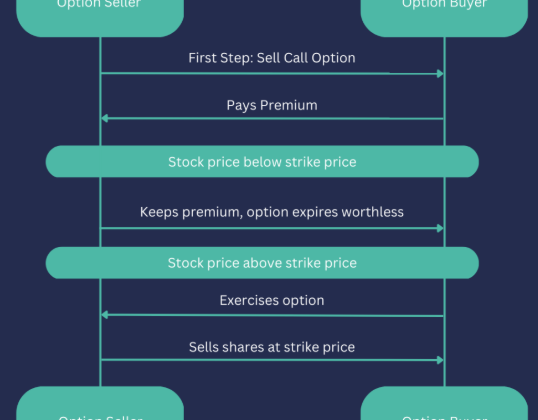
As businesses evolve and grow, financial management becomes more critical than ever. For scaleups—businesses experiencing rapid growth—the traditional methods of handling financial operations may no longer be sufficient. To support their expansion, scaleups are increasingly turning to next-gen financial management, which combines advanced technology with modern financial strategies. In this article, we’ll explore why this approach is vital for growth and how it helps businesses stay competitive in a fast-paced market.
The Shift Toward Advanced Financial Management
The landscape of financial management is shifting, with more businesses adopting next-gen financial practices to fuel their expansion. Scaleups, by definition, are high-growth businesses with a lot of potential. To scale effectively, they need more than just basic accounting. They need financial systems that can handle complexity, provide real-time data, and offer predictive insights. Next-gen financial management meets these needs by using cutting-edge technologies like AI, machine learning, and data analytics to enhance decision-making, improve efficiency, and align operations with market changes.
What is Next-Gen Financial Management?
Next-gen financial management leverages technology to improve traditional financial practices. By integrating tools such as AI and predictive analytics, businesses gain access to real-time insights that allow for more accurate forecasting and quicker decision-making. Predictive analysis is especially useful, as it helps businesses anticipate financial trends and potential risks before they become issues. This proactive approach is complemented by the ability to integrate seamlessly with existing systems, providing a flexible, scalable solution that adapts to the evolving needs of a business.
Why Are Businesses Adopting This Approach?
There are several compelling reasons why businesses are increasingly turning to next-gen financial management. First, it gives businesses a competitive edge by providing advanced financial strategies that can handle complex challenges. With automation and real-time data analytics, businesses can make more informed decisions faster, which is essential in a rapidly changing market.
Additionally, this approach supports scalability. As scaleups grow, they must quickly adapt to shifting market conditions, and next-gen financial management allows them to do this more efficiently. By aligning financial operations with long-term business goals, this modern system fosters growth and ensures that businesses remain agile enough to meet new challenges as they arise.
How Technology is Changing Financial Management
Technology plays a key role in driving next-gen financial management. Financial technology (FinTech) solutions have revolutionized the industry, offering scaleups a variety of innovative tools to manage their finances more effectively. These solutions help businesses access growth capital, manage cash flow, and streamline their financial processes. By adopting these tools, scaleups can benefit from enhanced efficiency, reduced operational costs, and better financial decision-making.
The Impact of Automation on Scaleup Finance
One of the most significant advantages of next-gen financial management is automation. By automating routine financial tasks, businesses can reduce human error, cut down on operational costs, and free up valuable time to focus on strategic planning. Automation also plays a key role in cash flow management, helping businesses maintain financial stability as they grow. Real-time financial data and automated reporting ensure that scaleups can proactively manage their finances, preventing issues before they become major concerns.
Key Considerations for Scaling Financial Operations
As scaleups move forward, several considerations must be addressed to ensure financial success. One of the most important is securing growth capital. Equity investment, often through venture capital, is a popular funding option for scaleups seeking to expand. Along with access to financing, partnering with knowledgeable financial advisors can provide essential support in developing strategies to scale effectively.
Funding Options for Scaling Up
Equity investment is a crucial funding source for many scaleups. By selling shares in the business, scaleups can secure the capital needed to expand. This is particularly important for high-growth companies that need substantial resources to maintain momentum. Venture capital is one form of equity investment that focuses on high-potential businesses, providing the financial backing they need to accelerate their growth.
Managing Cash Flow During Growth
Maintaining a healthy cash flow is critical for scaleups during periods of rapid growth. Effective cash flow management ensures that businesses can meet their financial obligations while also investing in growth opportunities. By using tools to forecast cash flow, monitor accounts payable and receivable, and optimize invoicing, scaleups can keep their operations running smoothly and avoid liquidity issues. Financial advisors can provide valuable insight into cash flow management and offer strategies to ensure financial stability.
The Role of a FinOps Manager in Scaleups
A Financial Operations (FinOps) manager is crucial for scaleups as they navigate the complexities of rapid growth. These professionals offer tailored financial advice, helping businesses optimize their financial strategies. From investment management to risk assessment, a FinOps manager ensures that scaleups are making informed decisions that align with their growth objectives. With their expertise, FinOps managers help businesses navigate challenges, streamline financial processes, and set the stage for sustainable growth.
How a FinOps Manager Can Drive Your Business
A FinOps manager brings a wealth of knowledge to scaleups, helping them navigate the challenges of scaling. By offering customized financial solutions, assessing risk, and identifying growth opportunities, they play a key role in ensuring the business is well-positioned for success. Their strategic guidance helps businesses optimize financial operations, reduce risks, and maximize profitability, all while maintaining a focus on long-term growth.
Selecting the Right FinOps Manager
When choosing a FinOps manager for your scaleup, it’s important to consider their experience with businesses in similar growth stages. Look for someone with a strong track record in managing financial challenges faced by scaleups. The right FinOps manager should also be able to offer tailored solutions, aligning financial strategies with the company’s goals. Their ability to adapt to the company’s evolving needs will be critical in supporting long-term success.
Exploring Business Opportunities for Growth
As scaleups mature, they must explore new business opportunities to sustain and accelerate growth. One of the most effective ways to expand is by entering international markets. By tapping into new regions, scaleups can increase their customer base and diversify their revenue streams. Expanding globally requires strategic financial planning, an understanding of local regulations, and access to capital. A solid financial strategy is essential to navigating international expansion successfully.
Diversifying Your Business Portfolio
Diversification is another key strategy for scaleups looking to reduce risk and explore new revenue streams. By expanding their product offerings or entering new industries, scaleups can mitigate the risk of relying too heavily on one market or product. Diversification fosters innovation and helps businesses remain adaptable in the face of market changes, positioning them for long-term success.
Preparing for Future Growth and Exits
For scaleups, planning for the future involves preparing for both growth and eventual exits. Whether through mergers, acquisitions, or an IPO, planning for a business exit requires careful financial management. A comprehensive exit strategy should include financial assessments, negotiations, and tax planning to maximize the value of the business. Preparing for the future ensures that scaleups can make the most of their growth potential and secure a successful exit when the time comes.
Conclusion
Next-gen financial management is crucial for scaleups looking to thrive in today’s competitive market. By leveraging technology, such as automation and FinTech solutions, scaleups can streamline financial operations, improve decision-making, and scale more effectively. A focus on managing cash flow, securing funding, and optimizing financial processes ensures that scaleups are positioned for sustainable growth. With the right strategies in place, including the support of a skilled FinOps manager, scaleups can take their business to the next level, ensuring long-term success and profitability.
















